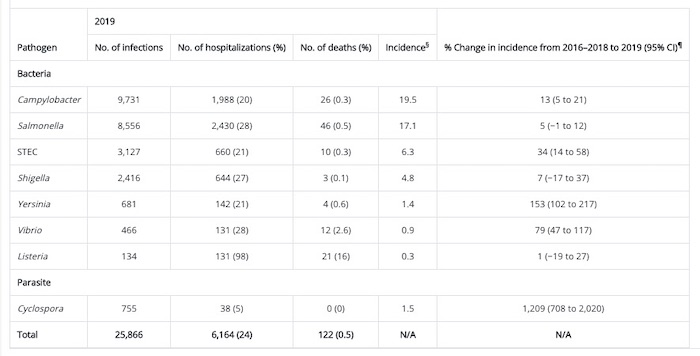Efforts to reduce food poisoning in the U.S. are failing, according to a new report from the Centers for Disease Control and Prevention (CDC). An analysis of the three-year-period from 2016-2019 shows the incidence of food poisoning from the most common pathogens such as E.coli, Salmonella and Listeria, either increased or stayed the same.
In 2019, the incidence of infections caused by Campylobacter, Cyclospora, Shiga-toxin producing E. coli (STEC), Vibrio, Yersinia all increased compared with rates of prior years. And the incidence of infections from Listeria, Salmonella and Shigella all remained the same in 2019 as in previous years.
More troubling is the finding that one of the Salmonella serotypes on an upward trend is a strain of Salmonella Infantis found in chicken that is highly resistant to antibiotics. That makes treating the infections of those sickened much more complicated.
Researchers noted that E. coli and Cyclospora outbreaks linked to produce continued to be a problem during this period. Several E. coli outbreaks linked to romaine lettuce occurred during this period as did Cyclospora outbreaks linked to fresh basil, salads served at McDonald’s and Del Monte vegetable trays sold at Kwik Trip gas stations.
Researchers concluded that “better implementation of known prevention approaches and new strategies is needed to overcome the continued challenges to reducing foodborne illnesses.”
.
